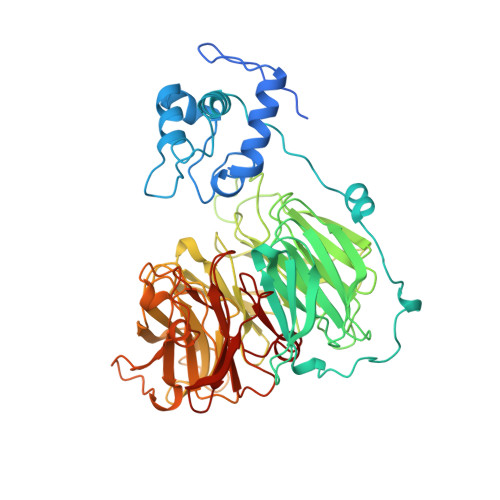Haem-ligand switching during catalysis in crystals of a nitrogen-cycle enzyme.
Williams, P.A., Fulop, V., Garman, E.F., Saunders, N.F., Ferguson, S.J., Hajdu, J.(1997) Nature 389: 406-412
- PubMed: 9311786
- DOI: https://doi.org/10.1038/38775
- Primary Citation of Related Structures:
1AOF, 1AOM, 1AOQ - PubMed Abstract:
Cytochrome cd1 nitrite reductase catalyses the conversion of nitrite to nitric oxide in the nitrogen cycle. The crystal structure of the oxidized enzyme shows that the d1 haem iron of the active site is ligated by His/Tyr side chains, and the c haem iron is ligated by a His/His ligand pair. Here we show that both haems undergo re-ligation during catalysis. Upon reduction, the tyrosine ligand of the d1 haem is released to allow substrate binding. Concomitantly, a refolding of the cytochrome c domain takes place, resulting in an unexpected change of the c haem iron coordination from His 17/His 69 to Met106/His69. This step is similar to the last steps in the folding of cytochrome c. The changes must affect the redox potential of the haems, and suggest a mechanism by which internal electron transfer is regulated. Structures of reaction intermediates show how nitric oxide is formed and expelled from the active-site iron, as well as how both haems return to their starting coordination. These results show how redox energy can be switched into conformational energy within a haem protein.
Organizational Affiliation:
Laboratory of Molecular Biophysics, University of Oxford, UK. [email protected]

















